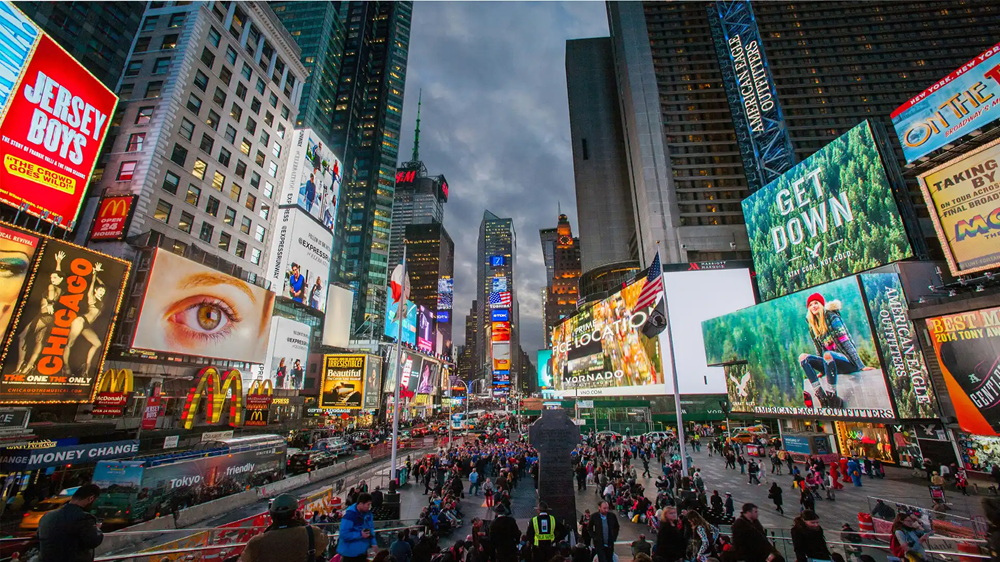Outdoor LED displays are transforming the way we advertise. Brighter, sharper, and more engaging than ever, these screens are helping brands capture attention and connect with audiences like never before. As we move into 2026, outdoor LED technology is set to become even more versatile and practical, offering businesses innovative ways to reach consumers.
A Brief History of Outdoor LED Displays
Outdoor LED displays emerged in the late 1990s, primarily for sports events and concerts. Their bright, clear visuals offered a dramatic alternative to traditional signage. Over the years, improvements in brightness, energy efficiency, and resolution have expanded their use to urban advertising and public information. Today, these displays are ubiquitous, transforming how brands communicate with their audiences through high-definition video walls and dynamic digital signage.
Key Drivers of Growth
Several factors have fueled the rise of outdoor LED displays:
-
Technological advancements: Higher resolution, improved color accuracy, and better brightness have made LED displays more effective and visually stunning.
-
Sustainability: LED screens consume less energy, reduce carbon footprints, and increasingly incorporate recyclable or solar-powered components.
-
Consumer engagement: Dynamic and interactive content draws attention and encourages user interaction.
-
Urbanization: In bustling city environments, high-quality, weather-resistant LED displays deliver clear visuals to large, mobile audiences.
7 Trends Shaping Outdoor LED Displays in 2026
-
Higher Resolution Displays
Display clarity continues to improve, allowing content to be seen clearly even from a distance. Businesses can share richer, more detailed visuals that captivate passersby in busy urban areas. -
Interactive Content
Touchscreens and QR code interactions are becoming common, enabling users to explore product information, play games, or engage with brands directly. Interactivity increases engagement and creates memorable experiences. -
AI Integration
Artificial intelligence allows displays to show personalized content based on audience demographics. For example, screens can adapt advertisements for a group of young shoppers or highlight nearby stores based on location. -
Sustainability Focus
Energy-efficient screens and solar-powered solutions reduce environmental impact. Many displays are now built from recyclable materials, demonstrating corporate responsibility while lowering operational costs. -
Augmented Reality (AR)
AR enables users to interact with virtual objects via their smartphones. Customers can visualize products in 3D, try on virtual clothing, or see how furniture fits in their home, creating immersive and unforgettable experiences. -
Dynamic Content
Displays can now adapt to time of day, weather, or local events. Morning commuters might see traffic updates, while later in the day, the same screen promotes nearby restaurants or events, keeping content fresh and relevant. -
Remote Management
Cloud-based management allows businesses to control multiple displays from a single location. Content updates, troubleshooting, and scheduling can all be done remotely, saving time and resources.
Impact on Consumers, Brands, and Cities
-
Enhanced consumer experience: Interactive and dynamic content makes advertising more engaging, creating memorable brand experiences.
-
Improved ROI for brands: High-resolution, targeted, and adaptive content increases engagement and effectiveness.
-
Transforming urban spaces: LED displays turn public areas into vibrant, interactive hubs with real-time information and entertainment.
-
Supporting sustainability: Energy-efficient and solar-powered displays reduce waste and environmental impact.
Conclusion
As we enter 2026, Outdoor Advertising LED Display are set to become more dynamic, interactive, and eco-friendly. Advances in resolution, AI, and AR create exciting opportunities for audience engagement, while remote management simplifies operations for businesses. These trends not only reshape advertising but also enhance urban experiences and sustainable practices.
Embracing these innovations ensures impactful, sustainable, and memorable advertising—benefiting both businesses and audiences alike.
Post time: Oct-21-2025

